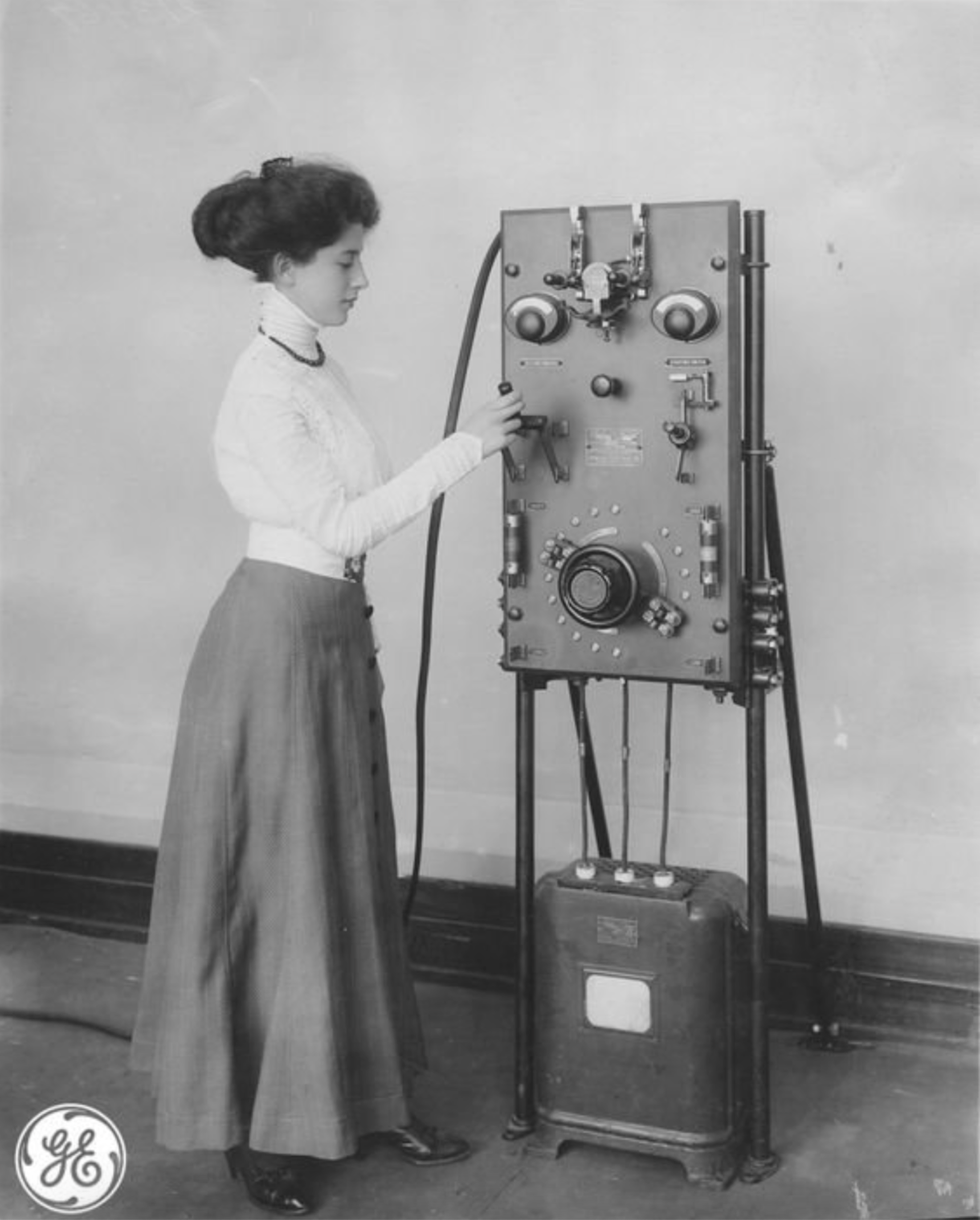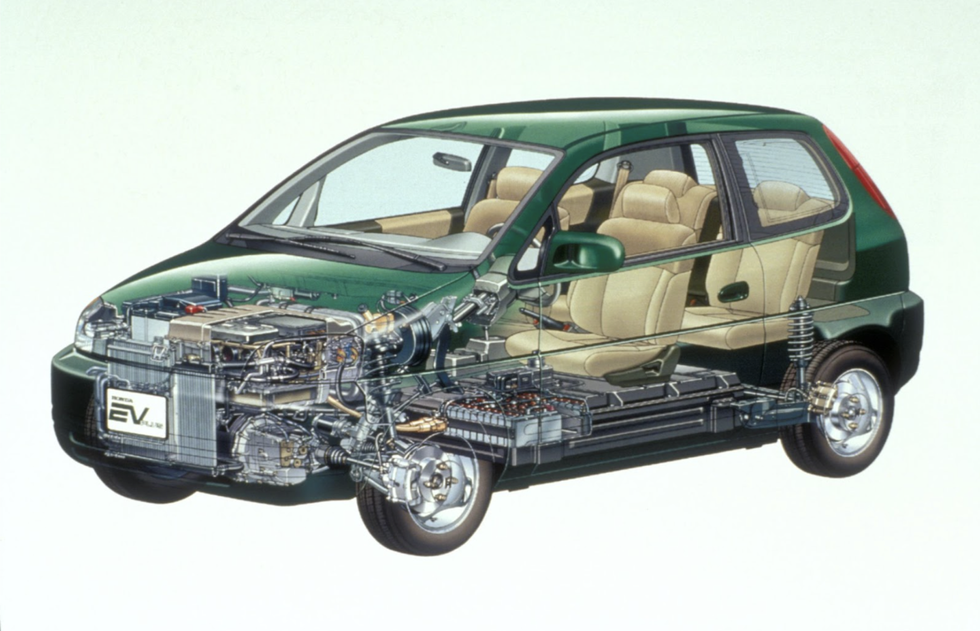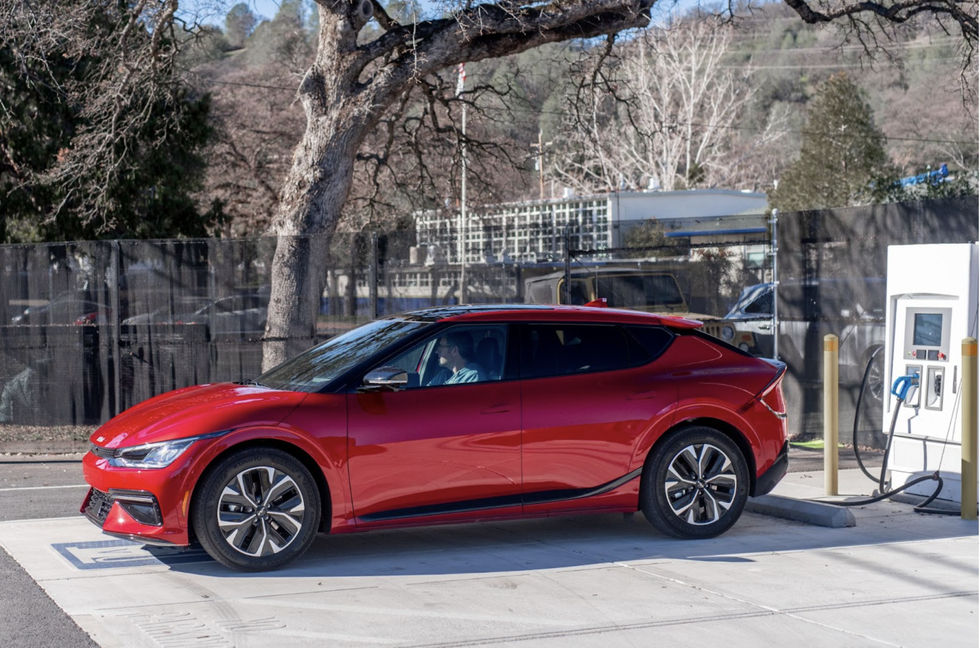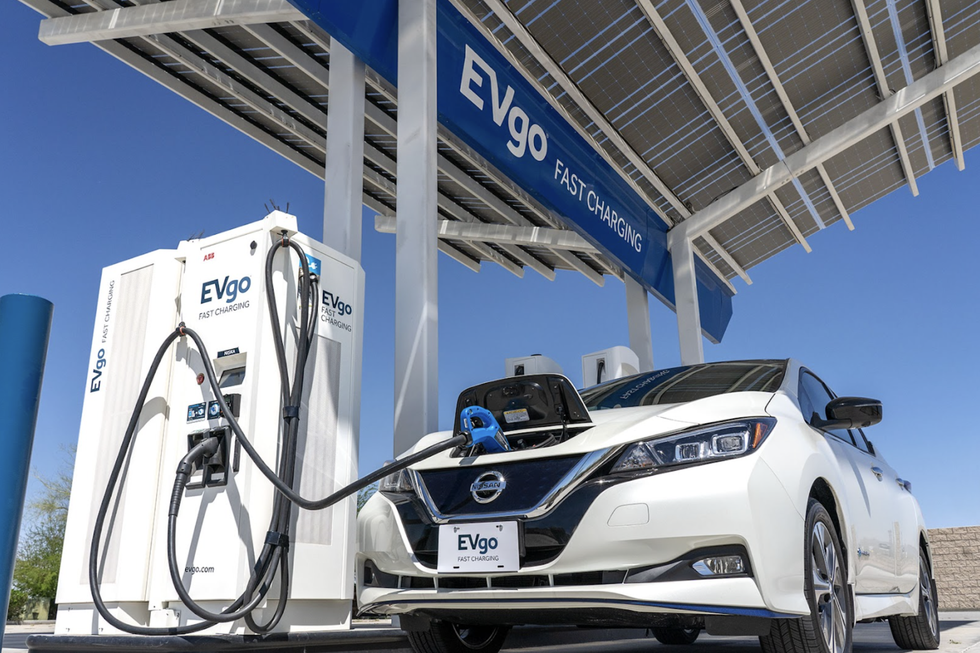Most people ascribe the dawn of the EV era to contemporary cars like the Nissan Leaf or Tesla Roadster, but battery-powered cars aren’t even remotely new. At the dawn of the 20th century, there were more electric cars on the roads than there were gasoline-powered ones, by a ratio of almost two-to-one. In 1912, the peak of EV dominance, there were over 33,000 electric cars plying American roads (for comparison, just 16,000 EVs were sold in the U.S. in 2011, when the Nissan Leaf was first introduced).
The History Of Plugging In
Early twentieth-century electric cars waned in popularity after the invention of the electric starter for combustion cars in 1912, which ended the tedious and dangerous work of crank-starting and made traditional ICE cars an attractive proposition. Still, in this short window of electric dominance, entrepreneurs had come up with a dizzying number of ways to charge them, even before most homes and smaller towns had consistent electrical power. For one example, inventor J.B. Merriam simply built a gas-fueled “charging plant”—a very early example of a generator—that could be installed in a homeowner’s garage to charge an EV; these were sold as official accessories with Baker Electric Cars. (This, for somewhat obvious reasons, flopped quickly.)
Another example was the General Electric “Electrant”, an “electricity hydrant”, which was an early attempt at public charging. It was powered by under-street direct-current (DC) lines; unfortunately, in its debut at the 1900 Madison Square Garden auto show, it couldn’t charge over half the vehicles on display thanks to incompatible plug designs.
Incompatible connectors and frustration during charging remain familiar problems 123 years after the Electrant’s debut, which begs the question: how did we end up here after so much progress, still unable to use the same plug for all of our cars?
The California Standard
As with most conflicting standards, the first divergence in charging methods came from a definitive attempt to unify all standards under one umbrella. When EVs finally re-appeared in the 1990s thanks to California zero-emissions mandates, some early cars such as the Toyota RAV4 EV and the GM EV1 used Delco “Magne-Charge” plugs, which were inductive-style chargers. (Inductive charging is most commonly seen today in wireless phone chargers, where energy is transmitted via the air, without a direct connection, although it was first proposed in a patent application from 1894). Inductive charging has the benefit of transferring energy via an electromagnetic field, which means there were no physical connectors to get dirty. The Magne-Charge design was touted by GM as “safe to use in all weather conditions”, as well as less costly and “more reliable during its life” than competing chargers, as the inductive design reduced the number of electronic parts needed in the vehicle.
Others, such as the Ford Ranger EV and the Honda EV Plus, used AVCON conductive–style chargers, with physical metallic contacts on the plug. While the plug was slightly more complex than the magnetic-paddle Magne-Charge connectors and the cars required more electronics onboard, the nature of conductive energy transfer is vastly more efficient, as less energy is wasted as heat during the charging process. It also creates less electromagnetic interference that would disrupt other electronics nearby.
In 2001, the California Air Resource Board (CARB) mandated that all EV charging ports had to be standardized, to “ensure a smooth progression towards the commercialization of EVs… while vehicle volumes are low.” The board settled on conductive charging as the new vehicle charging standard, and the SAE J1772 conductive plug design was born as the definitive new connector. With its birth, the Magne-Charge died off, as California stopped supporting inductive connectors at state-funded charging stations.
Since then, all electric cars sold in America can be charged with a J1772 plug. (Except Teslas, which need an adapter. More on that in a minute.) However, the J1772’s physical design means it only works with single-phase alternating-current (AC) power—like that supplied by a home power outlet—and can only supply 19.2 kW of power off a 240V power supply, which is “Level 2” charging.
(In Europe, the same communication protocol as the J1772 standard is used for AC “Level 2” charging, but with a different plug shape known as the “Mennekes” design.)
Tesla And The Need For (Charging) Speed
Direct-current (DC) charging, which is how fast-charging “Level 3” systems are powered, requires entirely different connector designs. Tesla was the first domestic manufacturer to practically introduce Level 3 charging in 2012 with its first Supercharger installation, which used a then-proprietary connector design that the company introduced with the release of the Tesla Model S. Since that first car, all subsequent Teslas have continued using the same plug design, colloquially known as the “Tesla connector,” although officially it is named the North American Charging Standard (NACS).
Tesla claimed it designed its own connector due to the proliferation of other standards and that it would likely be irrelevant to the broader industry, as people primarily charged at home. The plug itself is slimmer than competitors, and contains a sensor that allows Teslas to automatically open their charging doors when a NACS connector is near it. It’s also a highly-efficient design; the NACS design is theoretically capable of up to 1 MW charging (1,000 kW), and practically, V3 Tesla Superchargers currently can charge at 250 kW.
Functionally, the Tesla connector created a walled garden like Apple’s product ecosystem, which was arguably more important for Tesla than any of the NACS connector’s technical merits. The company’s business strategy involved building lots of charging infrastructure for its cars; this effort became the Supercharger network. Today, Tesla Superchargers account for 60% of all fast-charging stations in America. Using a connector that interfaced with solely Tesla cars gave the company a massive advantage over other EV manufacturers, as most non-Tesla charging infrastructure is still sparsely dotted over the US and frequently out-of-service, while Superchargers are remarkably reliable and virtually everywhere.
Tesla has since opened the NACS design to other manufacturers, which means that soon, it won’t be just Teslas parked at Superchargers, but the early advantage the charging network—and connector design—gave the company is undeniable.
Let’s Get A Cup Of Tea
Just before the development of the then-proprietary Tesla connector, a consortium of major Japanese automakers and the Tokyo Electric Power Company developed a new Level 3 DC connector standard for Japanese cars. This new plug design, unveiled in 2010, became known as “CHAdeMO”—a pun on a Japanese phrase about getting a cup of tea while charging, referring to how rapid “Level 3” charging would be—and was used by Japanese automakers globally for most of the 2010s. The CHAdeMO standard is capable of supplying up to 400 kW of power.
While CHAdeMO connectors are still commonplace in Japan, in the States, the only vehicles currently on sale that have a CHAdeMO connector are the Nissan Leaf and the Mitsubishi Outlander PHEV.
Germany Jumps Into The Ring
Of course, while Japan was making a DC charging connector standard, the rest of the world also decided to make one. In 2011, a panel of German engineers introduced the Combined Charging Standard (CCS) that would work for both AC and DC charging; by 2012, seven different automakers in Europe and America agreed to adopt it as their new standar. The CCS design is straightforward: it simply takes the already-existing AC charging standard plug design—in America, the J1772—and adds pins to the connector for DC charging. (American-market CCS “Type 1” connectors have a J1772-compatible design, and European CCS “Type 2” connectors use a Mennekes-compatible design. As a result, CCS plugs across the Atlantic are shaped differently, despite using the same protocol.)
Originally, CCS connectors were rated for a theoretical maximum of 350 kW of power, but recent high-power versions have delivered up to 700 kW of power. Many automakers have adopted the CCS design in recent years, including the Detroit Big Three, all three major luxury-car manufacturers in Germany, both large Korean car manufacturers, and a handful of Japanese car companies like Honda and Mazda. Even Tesla sells European-market Model 3s with CCS connectors because of how prevalent the design is in the EU.
The Confusing Present (And Future)
If it sounds like the battles are over, they’re not. While Europe appears to be converging on CCS for its chargers and CHAdeMO is the de facto standard in Japan, we in the States are still far from deciding on a universal connector. While CCS was popular in America for most of the 2010s, General Motors, Rivian, Volvo, and Ford have all announced that their EVs will discontinue using the CCS connector design, and will instead switch to the Tesla-designed NACS plug on new models beginning in 2025. It’s a move that makes sense—CCS has no real features in its favor and NACS has no real downsides. NACS is slimmer, thanks to its clean-sheet design that wasn’t influenced by the J1772 plug (like the CCS design was), it has a higher theoretical capacity than CCS, and most importantly, it is the native interface for the highly-regarded Tesla Supercharger network.
CCS really only took hold because it was the only widely-used standard that was open-source; with NACS now getting SAE certification as an industry standard EV connector, the final roadblock to mass adoption is out of the way. The question is simply if other manufacturers get on board—if not, we’ll all still be hauling plug adapters around in our frunks for the next few decades.
Victoria Scott is a freelance writer, photographer, author, and cat mom who lives in the middle of nowhere, Idaho. She is a leading industry expert in catastrophically breaking her vehicles while off-roading. Her proudest moment behind the wheel was completing Mission 34 in Gran Turismo.




















